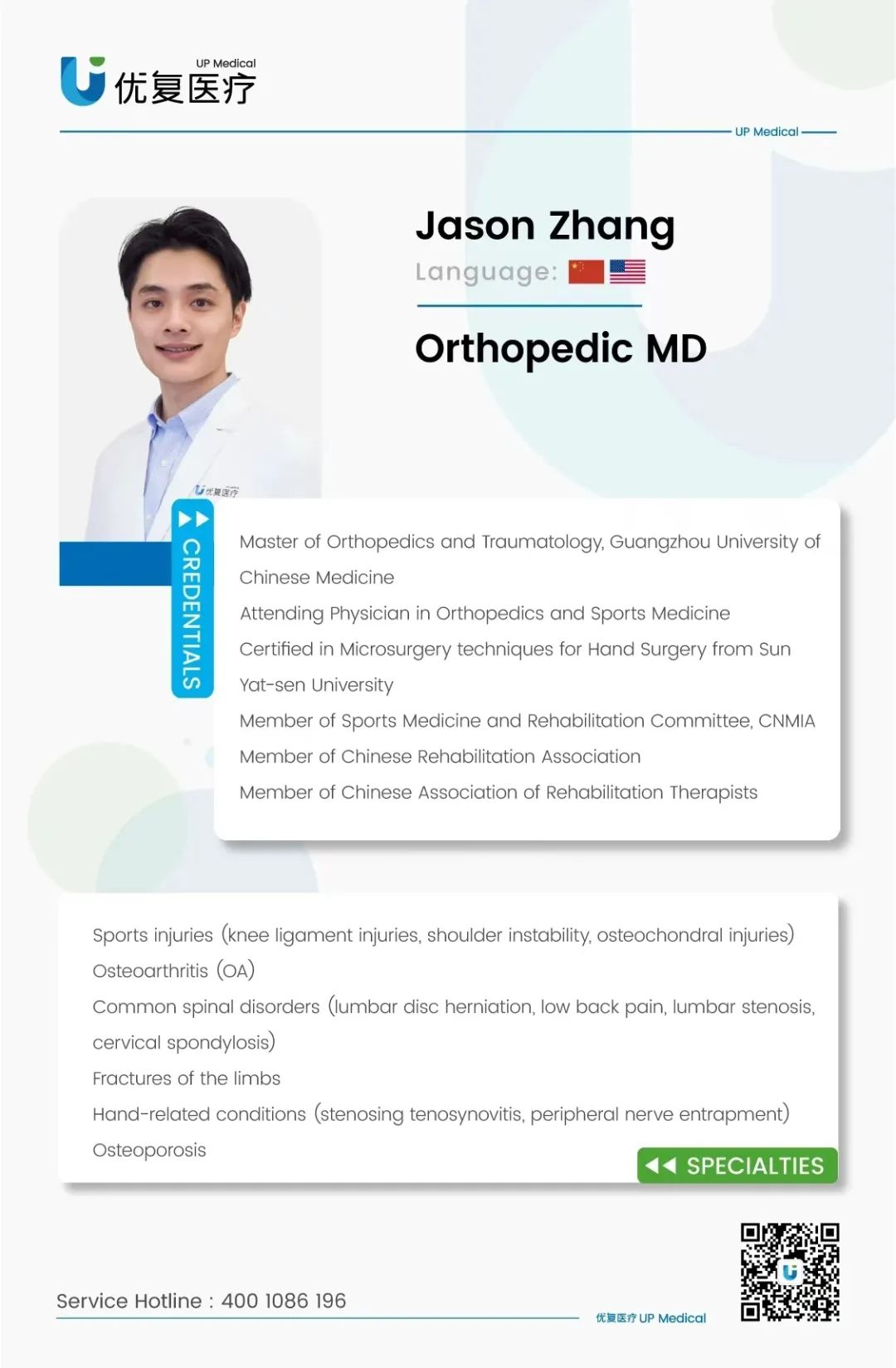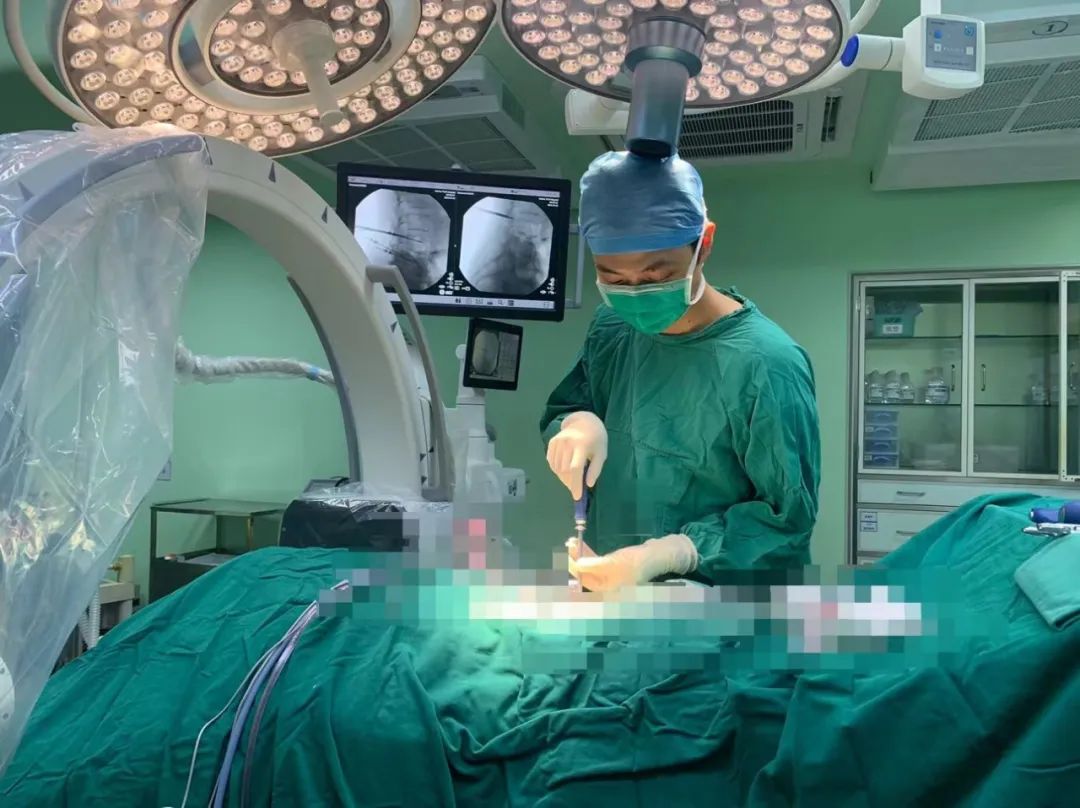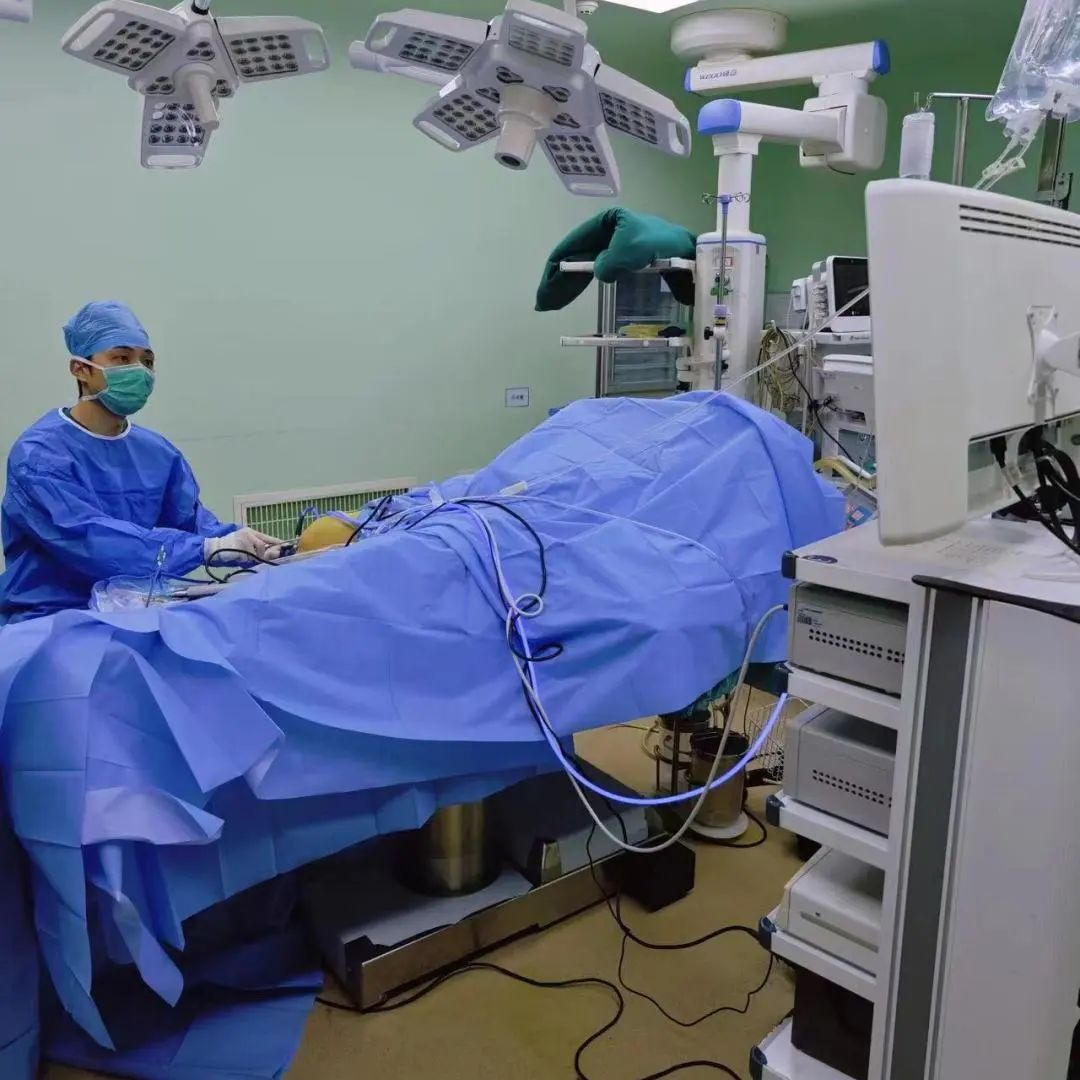Q&A: Jason Zhang (Orthopedics)


Meet one of our newest orthopedics to join the UP Medical team, Jason. Originally from Guangdong, Dr. Zhang received his masters degree from the Guangzhou University of Traditional Chinese Medicine.
Along with his field of study, Dr. Zhang enjoys the arts, visiting different museums, galleries and exhibitions, as well as architectural and interior design. Along with that, he also likes to watch movies and read all types of literature, from philosophy to history. He’s a sports enthusiast too – enjoying basketball, swimming and running, or even just walks around the city. A new passion of his is learning more about AI and using it to better learn, assist in writing and even do some of his own artistic designs.


Author / Lauren Orth / Jason Zhang
UP Medical
Read on to learn even more about Dr. Zhang and the work he is doing here at UP Medical:
Q1
Could you tell us more about some of your specialities?
I specialize in various orthopedic diseases, especially in spinal diseases and sports medicine. Many patients I have worked with often suffer from cervical spondylosis, spinal asymmetry, lumbar disc herniation, spinal degeneration, degenerative osteoarthrosis, and orthopedic problems that affect movement and function (such as rotator cuff injuries, meniscal injuries, ligament tears, and osteoarthritis).
I have extensive experience in both surgical and conservative treatments, and now focus on non-surgical treatments, including the treatment, prevention and rehabilitation of spinal diseases and sports injuries, helping patients improve their quality of life and restore daily activities and sports capabilities. In addition, I also combine regenerative medicine treatments (such as PRP), pain injections, and exercise prescriptions to relieve pain, promote tissue healing, and restore function. My goal is to provide patients with a comprehensive approach to care through evidence-based treatments, patient education, and personalized treatment.

Q2
What made you decide to pursue a career in the field of medicine?
After graduating with my masters from the University of Chinese Medicine in Guangzhou, I completed my master’s and physician training at the Shenzhen Provincial Hospital. During my graduate studies I focused almost exclusively on spinal orthopaedics, spending a lot of time learning the expertise, therapeutic concepts and clinical skills of the field. Initially, my goal was to be a spine surgeon. In the first year of my work, I followed a doctor who specialized in spinal endoscopic surgery at an orthopedic hospital. I participated in a large number of related surgeries and developed a strong interest in the theoretical knowledge of this technique.
In order to pursue more orthopedic operations, I worked in a general hospital with 220 orthopedic beds in my second year of work. In the first two years there, I was a hand surgeon and trauma orthopedic surgeon. During this period, I performed a large number of hand surgeries and routine limb fracture surgeries. Through continuous training, I also mastered the nerve and blood vessel anastomosis technology under the microscope.
Q3
Was there a specific part of the body that you found to be more interesting than other parts?
When learning the anatomy of the hand, I was shocked by its exquisite anatomy and aesthetics. Human wrist and hand movements are driven by more than 30 muscles in the forearm through tendons connected to the bones, and the intrinsic muscles of the hand control the movements of the fingers. Fine motor and thumb-to-palm functions are unique to humans, allowing us to grasp and pinch objects. Without the thumb, we cannot even play with a mobile phone with one hand. The hand is both dexterous and strong, and its special functions can be developed through deliberate training. It is the organ through which we create, use tools, and perceive the world. Hands are also one of the most beautiful organs of the human body. The appearance of human hands can almost reflect the type of occupation.
If you pay attention to newer robots, you will find that the intelligence is already quite advanced, but there is still a way to go before the hands are fully bionic, and this can give a glimpse of their complexity and subtlety. Hand surgery involves a lot of delicate operations, tissue transplantation techniques and cosmetic plastic surgery, which also made me passionate about hands and plastic surgery.
Later on, I was transferred to the emergency orthopedics department for one year. In the emergency orthopedics department, I accumulated a lot of experience in the manual reduction and treatment of fractures and joint dislocations. Interestingly, I fell in elementary school and fractured my right forearm, and I fell while playing basketball in my sophomore year and fractured my left distal radius. Both were treated with manual reduction and splint and plaster fixation, and my functions were completely normal after recovery.

Q4
After you finished your stint in the emergency orthopedics department , what did you do next?
When I was transferred back to the ward, I began to specialize in joint surgery and sports medicine. At this stage, I gradually began to perform higher-level orthopedic surgeries, such as relatively complex knee and ankle fracture surgeries, including arthroscopic meniscus surgeries and ligament reconstruction. My understanding of orthopedics made a leap at this stage. I spent a long time reading Bible-level textbooks on orthopedics-related sub-specialties, and insisted on reading top orthopedic academic journals. At the same time, I watched many expert courses and surgical videos, constantly reflecting and summarizing. While practicing orthopedic sports medicine, I gradually realized the importance of sports rehabilitation and sports injury prevention, and also understood that surgery is not the only way to help patients with orthopedic diseases and dysfunctions.
Q5
Could you elaborate on that?
For example, I worked in a clinic where I saw a patient who sprained his ankle joint while walking normally. Two weeks later, she sprained the opposite knee joint while walking, which led to a tear of the anterior cruciate ligament of the knee that required surgical treatment. She actually had multiple joint laxity and had weak neuromuscular and proprioceptive abilities, so she was slightly unbalanced and injured. If she received timely and systematic rehabilitation and training, it would be possible to avoid ligament tears.

Q6
And you eventually transitioned to join a rehabilitation clinic. What made this decision for you?
When I was invited to join a specialist orthopaedic rehabilitation clinic, the UP Clinic, the decision to put down my scalpel was not easy. However, I am excited about the opportunity to work with a team of professional rehabilitation therapists to use my knowledge and experience to better provide specialist diagnosis, treatment and rehabilitation for orthopedic patients.
From an orthopaedic surgeon to a full-time orthopaedics outpatient, the categories of diseases I see have not changed, but the severity and stage of the disease are different. I have more time to see each patient in a comprehensive and detailed way than in a public hospital. Better interpretation of the condition, advocacy and public information to patients is especially important for patients who have only minor anatomical problems but are not functioning well so that they can improve their function and avoid serious injury. The best time to treat the disease is before it occurs.
At the same time, the continuous progress of regenerative medicine and the accumulation of evidence-based medicine, such as the injection of platelet rich plasma (prp), will promote tissue regeneration of ligaments, tendons, cartilages, injury of meniscus and delayed union of fractures. I remain passionate about orthopaedics, for both surgical and non-surgical patients. When they are able to relieve pain, regain function, improve the quality of life and return to the sports they love, it is the most fulfilling moment of my career as an orthopaedic physician. For this I will continue to learn and improve, maintain a scientific attitude, combine evidence-based, experiential and personalized medicine to provide the most professional care for orthopaedics patients.
Q7
Who was your biggest role model growing up?
My master’s supervisor and one of my clinical teachers are both my role models. My supervisor was a very knowledgeable and rigorous professor. When I was in grad school, I used to practice with him. He would ask me to write outpatient medical records and was very demanding on the writing of medical records, especially for physical examinations. I later learned that he wanted to see if I really understood the disease and could develop a clear thinking about how to treat it. His spirit of seeking knowledge made me remember deeply.
Once a patient with lumbar disc herniation had clinical manifestations that did not conform to the protrusion of intervertebral disc. Everyone had doubts. During the rounds, I said what the patient had was a very lateral disc herniation. So it was the exit neural root that was being oppressed, not the common passing neural root. He was initially suspicious, then carefully re-read the film and re-examined his physique, and praised my judgment. On the second day I saw him reviewing a lot of relevant papers on his office computer, which affected me very much.
Another teacher is a spine surgeon with a background in trauma and orthopedics. He is the most efficient and perfect doctor I have ever seen in performing fractures, and he also dares to challenge difficult spinal surgeries. Once he took me to do lumbar spine surgery, and he told me in advance that he would allow me to expose the surgical opening and place the screws. I initially said that I wanted to get familiar with it first, and he said: You have seen a lot and have done many other surgeries. Sometimes you have to push yourself. I am here, so you don’t have to be afraid. After rehearsing it many times, I completed the task well on the operating table. He is responsible for my great and lasting passion for orthopedics. They were both important role models for me growing up.
Q8
What do you see as one of the biggest challenges with patients?
I think one of the major challenges currently is that the importance of orthopedic rehabilitation and sports injury prevention is often overlooked. Many patients tend to take problems that don’t have any obvious structural damage lightly, and ignore the importance of functional improvement.
However, these problems often lead to more serious health conditions later in life if not intervened early. Especially in some orthopedic problems. Even though there is no obvious structural damage on the surface, future complications can actually be effectively prevented through early rehabilitation intervention to improve joint mobility, balance, neuromuscular control, and overall function. Promoting aggressive recovery and preventive measures is essential for long-term health, but this concept is sometimes difficult to convey to patients who expect rapid treatment.
Q9
We hear that a lot! Do you have any patient stories you would like to share?
I was in charge of a 45-year-old female patient in the ward. She suffered multiple fractures throughout her body due to a car accident, including a lower leg fracture with skin and muscle defects, a thigh fracture, and a forearm fracture. She also faced severe anemia.
My team and I performed multiple surgeries on her, including fracture fixation surgeries, calf skin flap transplants, and skin graft surgeries. This patient was in great pain and we put in a lot of effort during her three months in the hospital. After being discharged from the hospital, she came to the outpatient clinic for regular check-ups and actively carried out rehabilitation training under my guidance. Three months after she was discharged from the hospital, she actually walked into my consulting room on her own, which surprised and moved me very much. About a year-and-a-half later, she came back to have her internal fixation removed and has completely returned to her normal life. Seeing patients who have experienced severe trauma like hers recover so well is one of the most rewarding moments as an orthopedic surgeon.
Q10
Wow, that’s incredible. In a nutshell, what is your approach to helping others heal?
My treatment philosophy combines a comprehensive diagnosis, individualized treatment plans, and an emphasis on recovery and prevention. I will give impartial surgical and non-surgical treatment opinions based on each patient’s specific situation. I pay special attention to patient education to help them understand their injury, value functional improvements, and the important role of rehabilitation in the recovery process.
I prefer to work closely with the rehabilitation team to not only help patients through recovery, but also to help them prevent future injuries and ultimately improve their quality of life. Through advances in regenerative medicine, such as PRP injection treatments, I can also promote tissue healing in more advanced ways to supplement traditional treatments. My goal is to provide personalized, evidence-based professional care that not only addresses the immediate problem, but also focuses on the patient’s long-term functional health.


本篇文章来源于微信公众号: 上海优复康复医学门诊部

